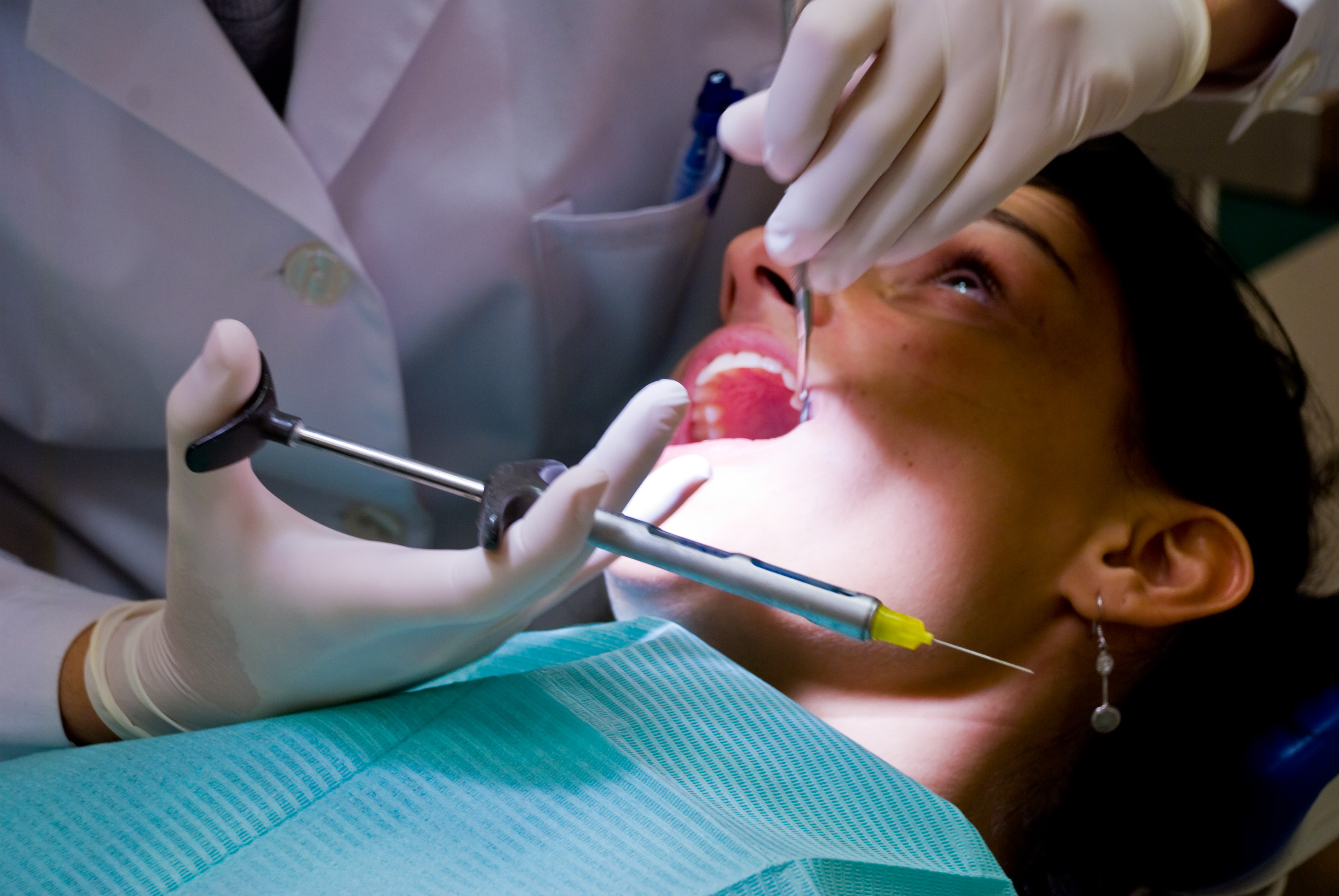Innovative Dental Local Anesthesia Retractor
More accurate, more comfortable, and safer dental local anesthesia injections
Despite the risk of needle stick injuries to the dentist, the administration of local anesthetics in dentistry often entails the use of the non‑dominant hand as an intraoral retractor (instrument to move, cover, and protect tissue). The dentist palpates (feels) the area of the injection and will often then keep finger(s) in the oral cavity to maintain tension on the tissue, and orientation with landmarks (known anatomic structures). Specifically, when the inferior alveolar nerve block is administered, dentists depend on utilizing anatomic landmarks, like the coronoid notch of the mandible. Usually a dentist will use their thumb to determine the deepest part of this notch; due to complexity and variation of this anatomy combined with the depth of the injection (25 mm), a significant failure rate of up to 20% results for the inferior alveolar nerve block. There is a need for a retraction device specifically designed to protect against dental needle stick injuries.
Inventors at Stony Brook University have developed a new medical device which is specifically and anatomically designed to locate the deepest part of the coronoid notch, maintain tissue tension, and retract the cheek during the administration of the inferior alveolar nerve block. This retractor is designed to locate the correct anatomic landmarks, and to guide the dentist to place the dental local anesthetic syringe at the most ideal angulation and thereby deposit local anesthetic solution more accurately, reducing the number of repeat injections. The device has scored lines on it which guides a dentist on the proper plane for injection; it’s constructed of a resin material, making it light and easily sterilized. By removing the dentists finger(s) from the mouth, this device supports the principles set forth in the Federal “Needlestick Safety and Prevention Act,” which builds off of the existing blood-borne pathogens standard in effect under the Occupational Health and Safety Act of 1970 (OSHA). This act, as part of a comprehensive plan, requires the use of safer medical devices in order to decrease risk of exposure to blood‑borne pathogens.
 Please note, header image is purely illustrative. Source: Conor Lawless, flickr, CC BY 2.0.
Please note, header image is purely illustrative. Source: Conor Lawless, flickr, CC BY 2.0.
-Designed for a specific anatomic region, based on known body dimensions.
-Smooth contours promote patient comfort during the injection.
-Allows the dentist to perform the injection accurately and safely
-Comfort for the patient
Dentists routinely administer the inferior alveolar nerve block in order to provide local anesthesia to treat teeth in the lower jaw.
62/696,427 / US Provisional Patent Application [PCT/US2019/041168 / PCT](https://patents.google.com/patent/WO2020014335A1/en?oq=wo2020014335)
Available for licensing.
Development partner,Commercial partner,Licensing
Patent Information:
| App Type |
Country |
Serial No. |
Patent No. |
Patent Status |
File Date |
Issued Date |
Expire Date |
|